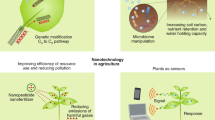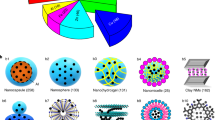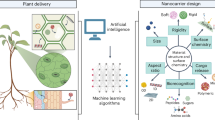Abstract
Natural agricultural production is an open system, both energy and matters are exchanged freely in this system involving interactions of geosphere (especially pedosphere), biosphere, and atmosphere. Agriculture provides crops for food and industry, fiber, fuel, auto-fuel and drugs. On one hand it faces ever escalating food prices and farmer’s suicides, and on the other hand input use efficiency is low. Present agricultural practices have made harvests toxic, mother’s milk a poison, and breathing-air venom. In this background, nanotechnology brings new hope. Nanotechnology is an interdisciplinary venture-field that converge science, engineering, and agriculture and food systems into one. The Environmental Protection Agency of the US has defined nanotechnology as the understanding and control of matter at dimensions of roughly 1-100 nm, where unique physical properties make novel applications possible. The triple problems of agriculture – over-dependence on supplementary irrigation, vulnerability to climate, and poor input and energy conversion to products – can be solved by using nanotechnology, provided agricultural scientists seek a chance to try and cooperate with scientists of kindred disciplines. Nanotechnology is new to agriculture; a ventured field of less than a decade old. But, already success has been achieved for manufacturing nano-pesticides and nano-fertilizer, in disease elimination in poultry, in food packaging, use of agricultural waste, nanosensors, precision agricultural practices, and in livestock and fisheries. Nanotechnology holds the potential to revolutionize agriculture and food systems in the areas of nano-fertilizers, pesticide career, microfluidics, BioMEMS, nucleic acid bioengineering, smart treatment delivery systems, nanobioprocessing, bioanalytical nanosensors, nanomaterials, bioselective surfaces, environmental processing, pathogen detection, plant/animal production, biosecurity, molecular and cellular biology, protection of the environment through the reduction and conversion of agricultural materials into valuable products, design and development of new nanocatalysts to convert vegetable oils into biobased fuels and biodegradable industrial solvents, and in controlled ecological life support system, to name a few.
Similar content being viewed by others
Article PDF
Author information
Authors and Affiliations
Rights and permissions
About this article
Cite this article
Mukhopadhyay, S. Nanotechnology in Agriculture: Propagating, Perpetuating, and Protecting Life . Nat Prec (2011). https://doi.org/10.1038/npre.2011.5808.1
Received:
Accepted:
Published:
DOI: https://doi.org/10.1038/npre.2011.5808.1



